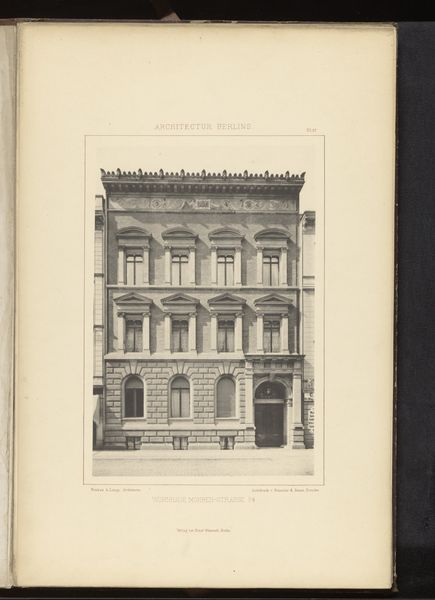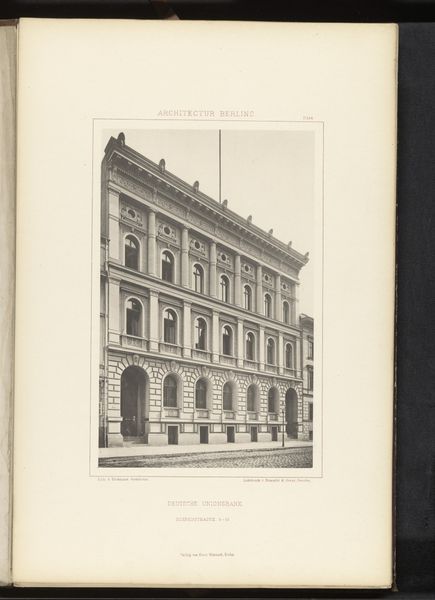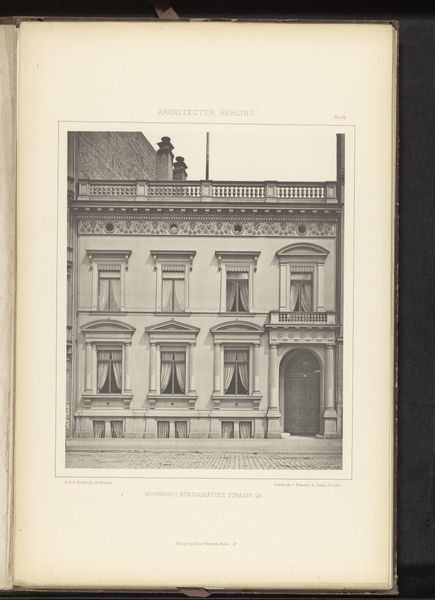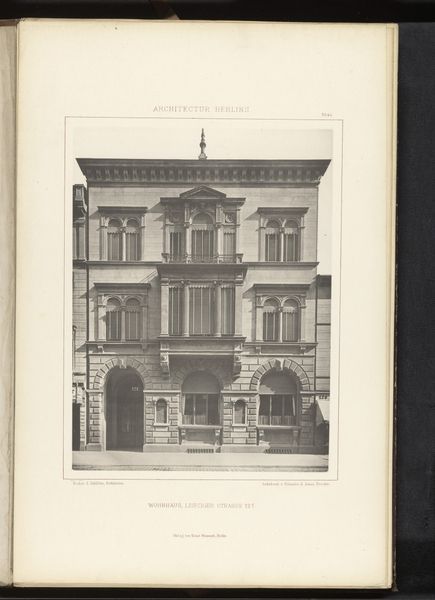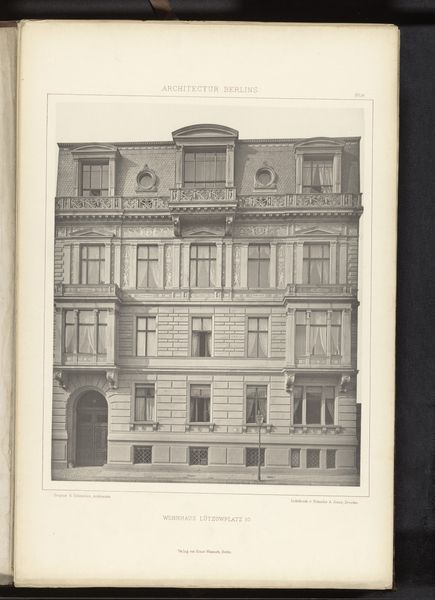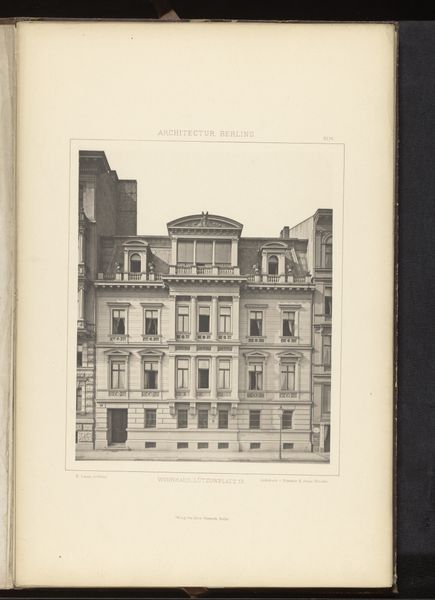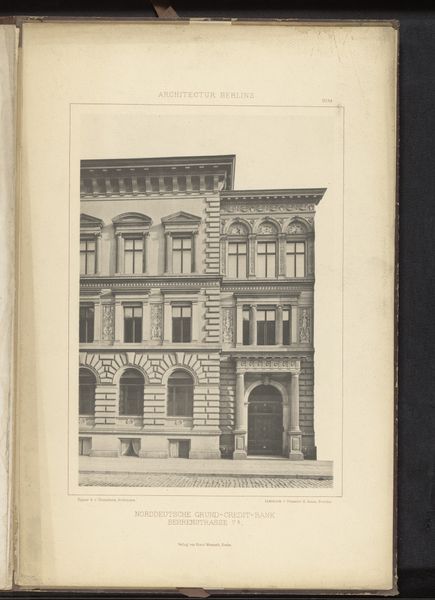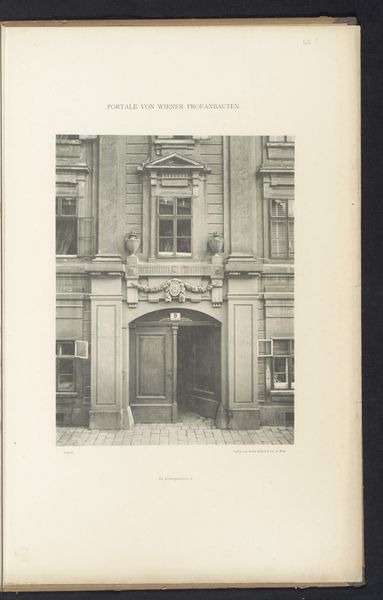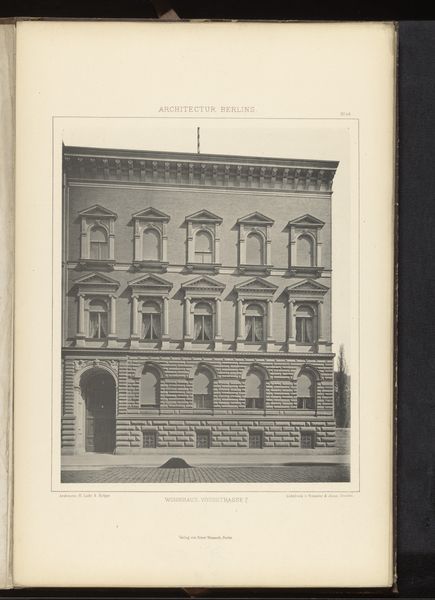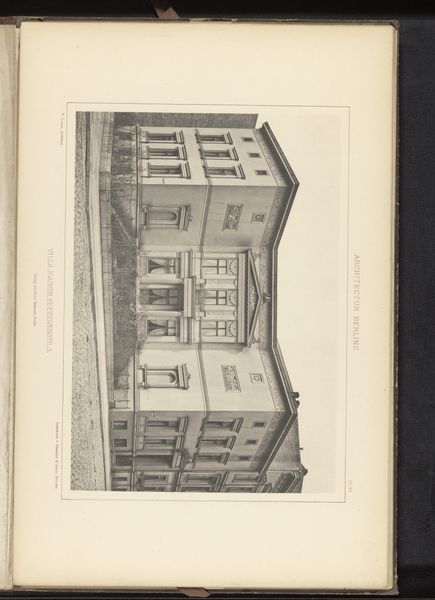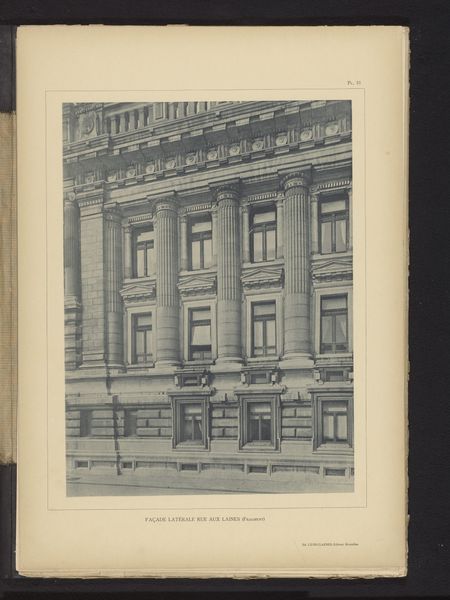
Gezicht op een vakbondsgebouw aan de Schadowstrasse 6 en 7 in Berlijn, Duitsland before 1877
0:00
0:00
anonymous
Rijksmuseum
Dimensions: height 315 mm, width 182 mm
Copyright: Rijks Museum: Open Domain
Curator: Welcome to the Rijksmuseum. We're standing before an intriguing piece: a photograph entitled "Gezicht op een vakbondsgebouw aan de Schadowstrasse 6 en 7 in Berlijn, Duitsland," or "View of a Trade Union Building on Schadowstrasse 6 and 7 in Berlin, Germany." It was taken before 1877 by an anonymous photographer. Editor: It's stark. Very geometrical. The photograph captures the building head-on, emphasizing the rigid symmetry, yet the monochrome lends a somewhat sombre and reserved mood. It projects a feeling of austerity and a firm orderliness. Curator: Precisely. The architecture itself, with its neoclassical elements, speaks volumes about the rising industrialism of Berlin. You see this type of building cropping up at that time to represent workers. Labor conditions were changing rapidly, hence the rise in social organization and trade unionism that pushed for worker rights and fair treatment. Photography here becomes a crucial medium in documenting and broadcasting such transformations in urban infrastructure and the broader socioeconomic shift. Editor: And notice how the photographer framed the shot. The tonal contrast and light and shadow create an alternating pattern between the windows, making them almost resemble punch cards or some kind of coded pattern, reiterating industrialism’s mark. This emphasis on light and dark amplifies the geometrical precision of the photograph and also suggests power, in how the solid building is so present. Curator: I’d say so. We see these solid building in comparison with photographs and illustrations from the 19th Century of workers who might have to enter into those building everyday. But to step back from the image a moment – we ought to think about what makes this photograph archival. Why collect these prints documenting Berlin Architecture? How might the building’s functionality reflect the conditions of production for architecture, of workers constructing the city? Editor: Good questions, which, like any striking piece of art, propel us beyond mere observation to ponder its lasting cultural reverberations. Curator: A visual testament and quiet social statement. A very nice observation indeed.
Comments
No comments
Be the first to comment and join the conversation on the ultimate creative platform.
